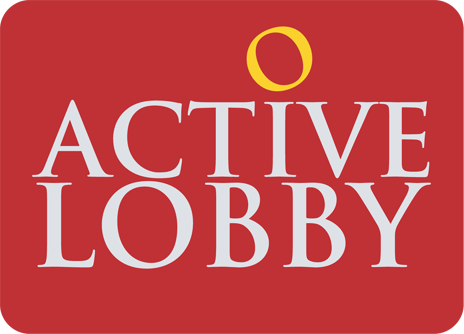How Facebook’s Digital Transformation Drives Business Efficiency

Facebook’s Digital Transformation
Facebook’s Digital Transformation has revolutionized how businesses operate, turning it from a simple social network into a global technology leader. Think back to when Facebook was just a simple platform to connect with friends. Today, it stands as a technological powerhouse that processes over 2.5 billion daily active users across its family of apps.
Facebook has grown from simple features like profile creation and facebook login to sophisticated tools that include facebook marketplace, facebook ads manager, and creator studio. This shift represents more than just user-facing features – it showcases a complete digital overhaul that has revolutionized the company’s internal operations.
In this piece, we’ll get into Facebook’s digital transformation experience and how it has improved business efficiency. We’ll explore their technological development, internal systems, evidence-based approaches, and their measurable effects on operations.
Facebook’s Evolution from Social Network to Digital Powerhouse
Facebook’s rise from a college networking site to a global technology powerhouse is quite a story. At the time Facebook launched in 2004, it transformed how people connect. The platform’s appeal was clear – more than half of Harvard’s undergraduate population signed up in the first month[1].
The early days of Facebook’s infrastructure
Facebook started by using leased data center space from colocation providers. The 2008 financial crisis became a turning point that led the company to take control of its infrastructure. The core team decided to design and build their own data centers. They wanted to create the most efficient and modular ecosystem possible[2].
Key technological milestones
Our technological progress brought several groundbreaking achievements:
- Development of custom automation solutions and internal communication tools
- Implementation of StatePoint Liquid Cooling system, which reduced energy usage by 32% and water consumption by 80% compared to industry standards[2]
- Creation of advanced hardware fault detection and remediation systems[2]
Building a data-driven culture
We have developed a strong data-driven culture that has changed how we operate. Our approach starts with hiring exceptional data scientists and engineers. We also ensure effective organizational design and management approaches
[3]. This transformation is a vital part to measure our marketing investments and develop more effective strategies.
The company’s journey reached a new chapter in October 2021 with the announcement of our progress to Meta. This brought together our apps and technologies under one new company brand[4]. The change shows our expanding vision beyond social media. We now invest heavily in the metaverse to create immersive experiences that will transform how people connect, find communities, and grow businesses[4].
Our infrastructure now supports billions of users with remarkable efficiency. The data centers use 32% less energy and 80% less water than the industry standard[2]. This shows our dedication to green practices and operational excellence.
Revolutionary Internal Systems and Tools
The company’s digital transformation has brought groundbreaking systems that changed how we work. These breakthroughs streamline our processes effectively.
Workplace by Facebook platform
Workplace, our communication tool, has changed how teams collaborate. Companies with up to a thousand users pay INR 253.14 per active user, while larger organizations pay INR 84.38[5]. Data shows that 87% of employees want to maintain performance ratings through this system [6].
Custom automation solutions
We have automated work processes throughout our operations. The internal tools team in Menlo Park builds custom solutions instead of using ready-made software[7]. Key features include:
- Automated candidate matching and interview scheduling
- Custom-built customer relationship management system
- Automated server repair and facility management
- Smart conference room allocation through Wayfinders
Internal communication innovations
A complete moderation framework divides internal content forums into three tiers: Required Moderation, Recommended Moderation, and No Moderation[8]. This approach gives transparent yet controlled communication throughout our organization.
Immediate monitoring systems help our technology team track internal conversations and ensure proper reporting of comments[8]. An Auto Translate feature supports 91 languages that connects our global workforce by breaking language barriers[9].
Our internal tools show our dedication to efficiency. CIO Timothy Campos puts it well: “The best way to make a business process efficient is to completely automate it”[7]. This mindset has helped us achieve higher revenue per employee than most tech companies[7].
Data-Driven Decision Making Framework
Our operational excellence stems from a sophisticated analytical framework that processes over 500 terabytes of data daily[10]. This massive data processing helps us make informed decisions about product development, marketing strategies, and customer service improvements[11].Facebook’s digital transformation has played a significant role in enabling the company to leverage data in real-time, making informed decisions faster than ever before.
Implementation of advanced analytics
Our analytics solutions merge with Meta Business Suite and Ads Manager platforms[12]. We combine quantitative and qualitative data analysis to learn about user interests, competition metrics, and regulatory compliance[10]. Deep learning algorithms have helped us achieve remarkable accuracy in data interpretation. The image recognition system now surpasses human ability to identify faces in photographs[10].
Real-time monitoring systems
Multiple critical functions run on our up-to-the-minute data processing systems:
- Combined, anonymized user voice coverage
- Mobile application analytics
- Quick insights for page administrators[13]
The systems deliver seconds-level latency, which meets our use cases while providing resilient infrastructure and flexibility[13].
Performance measurement metrics
Key performance indicators directly support our business objectives[14]. Facebook data produces several significant metrics:
- Click-through rates and user involvement
- Conversion rates and customer acquisition costs
- Campaign implementation results
- Overall ROI measurements[11]
Advanced analytics platforms and machine learning algorithms help us refine these insights continuously to optimize strategies[11]. This detailed framework keeps our business strategies in line with customer needs and market trends, which leads to better outcomes[11].
Impact on Operational Excellence
Meta has transformed its internal operations through better practices. The company’s push toward efficiency has produced impressive results in several areas.
Simplified processes
Meta teams now use Process Street as their main workflow management platform. This system allows them to simplify operations and boost efficiency with custom templates and task assignments[15]. The company’s SureTriggers integration now connects Facebook Pages with over 1,010 apps to create uninterrupted workflow automation[15]. This approach maintains consistency between departments and helps uphold product quality standards[16].
Cost reduction achievements
The company’s efficiency programs have led to major cost savings. The Year of Efficiency program reduced the team size by about 10,000 positions[2]. Buck2, the new open source build system, compiles approximately 50% faster than older systems[2]. The company’s data centers in Sweden take advantage of the cold climate to substantially lower equipment cooling costs[17].
Productivity improvements
Several key changes have boosted productivity:
- Meta Advantage+ placements now optimize ad delivery on all available platforms[18]
- Meta Advantage campaign budget has made budget management more efficient[18]
- Engineers show better performance when they work with teammates in-person at least three days weekly[2]
The company’s focus on automation and continuous improvement has created a more efficient organization that handles priority tasks better[2]. Meta continues to invest in AI tools and automated workloads that will improve productivity well into the future[2].
Conclusion
These achievements reflect our steadfast dedication to automation, advanced analytics and intelligent internal systems, all enabled by Facebook’s digital transformation. Facebook evolved from a college networking site into Meta, demonstrating the power of strategic digital innovation. Our success shows how custom solutions, analytical insights and simplified processes create tangible business value.
The numbers speak volumes. We achieved 32% lower energy usage in our data centers and 50% faster compilation speeds with Buck2. Our Year of Efficiency program delivered substantial cost savings. These achievements reflect our steadfast dedication to automation, advanced analytics and intelligent internal systems.
Digital transformation yields measurable benefits with thoughtful execution. Small steps supported by analytics and the right tools lead to major improvements in business efficiency.
Want to start your own digital success story? The time to go digital is now. Let’s make it happen together! Visit supportlobby.com or email us at [email protected].
FAQs
Q1. How has Facebook’s digital transformation enhanced its operational efficiency? Facebook’s digital transformation has streamlined workflows, reduced costs, and improved productivity. The company has implemented custom automation solutions, advanced analytics, and internal communication innovations like Workplace. These changes have led to faster compilation speeds, optimized ad delivery, and significant energy savings in data centers.
Q2. What are some key technological milestones in Facebook’s evolution? Facebook’s technological evolution includes developing custom automation solutions, implementing the StatePoint Liquid Cooling system for energy efficiency, and creating advanced hardware fault detection systems. The company also built its own data centers and developed sophisticated internal communication tools.
Q3. How does Facebook leverage data in its decision-making process? Facebook processes over 500 terabytes of data daily, using advanced analytics and real-time monitoring systems. This data-driven approach enables informed decisions about product development, marketing strategies, and customer service improvements. The company also uses machine learning algorithms to continuously refine insights and optimize strategies in real-time.
Q4. What impact has digital transformation had on Facebook’s workforce? Digital transformation has led to a more efficient workforce at Facebook. The company has implemented tools like Workplace for collaboration and automated various processes, including candidate matching and interview scheduling. Facebook has also found that engineers perform better when working in-person with teammates at least three days per week, demonstrating how digital transformation influences work arrangements.
Q5. How is Facebook balancing efficiency with sustainability in its operations? Facebook’s digital transformation efforts have significantly improved sustainability. Their data centers use 32% less energy and 80% less water than industry standards. The company has also strategically located data centers in colder climates to reduce temperature control costs. These initiatives demonstrate how Facebook is leveraging digital transformation to achieve both operational efficiency and environmental sustainability.
